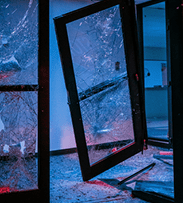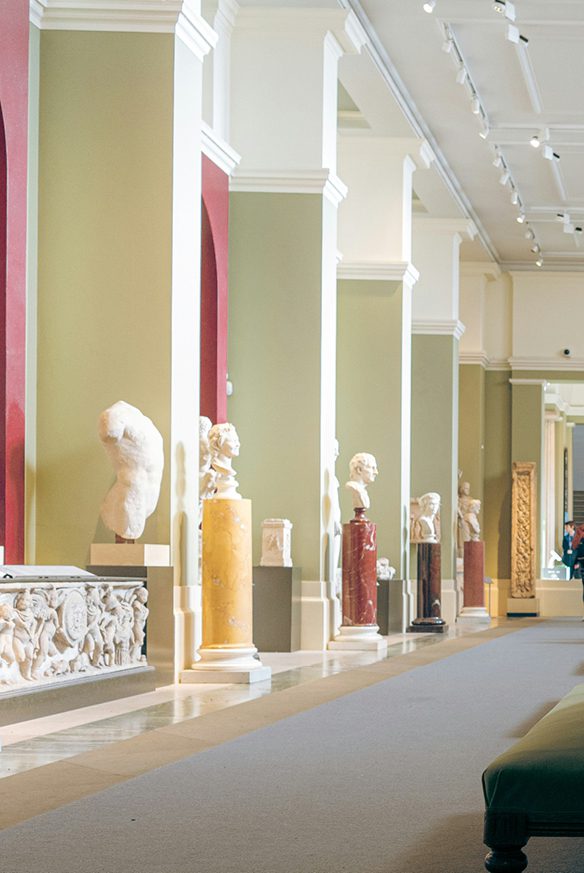

Protecting art galleries and museums means not only addressing the concerns of safety and security, but also considering the cultural and aesthetic aspects of the building. The Integr8 range of shutters offers built-in and hidden, lintel options, making it perfect for a discreet solution.
From a security point of view, museums are a security nightmare – keeping some of our most valuable belongings in one place is asking for trouble. Much like a common criminal will target Luxury Properties and head straight for the safe, professional criminals understand that museums hold pieces of upmost monetary, cultural or scientific value.
Mostly concerned with mitigating theft and destruction of assets (valuable object or property), the most important element of securing high value buildings such as national museums is to delay the experienced attacker for as long as possible.
There are two main security considerations in play here; first is to ensure the institution is always protected, the second is the protection of temporary exhibitions and collections.
Find out how Charter Global can protect your museum or gallery
National museums and galleries, such as the Tate Modern, will host renown exhibitions and personal collections from other institutions across the globe, and must strategise in advance the reallocation of resources.
Exhibitions are fantastic crowd-pleasers, but massively increase the risk faced to the museums and subsequently, the cost of insurance also rises.
The Government Indemnity Scheme (GIS) provides an alternative to the cost of commercial insurance, allowing national cultural institutions with the ability to display high value art and cultural objects to the public. GIS also provides cost-free indemnity cover for art and cultural items to be loaned on a short or long-term basis. For other buildings categorised as high value with similar risk profiles, including archives, libraries and reference institutions, the same allowances may not be provided making security provisions that much more important.
Mitigating all risks posed to high value buildings must first begin with an assessment of criminal threat levels, of which most will be dependent on circumstance.
An institution that is internationally renowned for certain collections (for example the pre-historic collection at the National History Museum) or has previously suffered robbery with the loss of some masterpieces, will consider the potential level of threat to be high.
For smaller institutions with modern collections and purpose-built properties, the threat level will be considerably lower. More often however, GIS requires a minimum standard security rating. Recent project, MK Gallery, required a minimum LPS 1175 SR4; a performance rating more commonly seen on nationally-funded properties.
Implementing physical security measures throughout any building of facility does significantly reduce risk, however no solution will one hundred percent effect.
When implementing physical security measures, there must be considerable allowances for both the construction regulations in place on properties of high value and the assets themselves. In regards to the physical integration, property type is the main conductor for specification.
If the property is purpose built, independently certified products can be tailored to specification and architecturally design. If the property is listed however, or is categorised as a Heritage building, solutions must be considerate of aesthetic and preservative regulations. Arson is also worth mentioning as there has been a steady increase within the UK in recent years, and whilst the breakout of fire is normally the result of carelessness, it poses a unique risk of destroying everything if countermeasures are not implemented.
The assets themselves may also have exhaustive restrictions. Government acts, such as the Museum and Galleries Act 1993 which encompasses all nationally recognised institutions, have extensive restrictions on the showcasing of certain objects, for example the type of display casing. Combined with the environmental preservation and restoration regulations, the overall limitations are severe and require dedicated management teams.
As a market leader, Charter Global have been manufacturing and installing bespoke, high security rated roller shutters for over 20 years. Our products are independently certified by LPCB to LPS 1175 issue 8 and have Secured by Design Police Preferred Specification accreditation. Browse a small selection of projects that we have completed in the arts, culture and museums sector:
Beyond the general risk identified, each application will also have unique threats. This encompasses anything from libraries having high number of thefts because the ‘hands-on’ nature of objects is taken advantage of, to successful snatch-and-grabs in smaller museums with inadequate protection layouts, to independent galleries targeted as they don’t have the governmental backing that the national galleries do.
Historically, attacks on museums and galleries have been through force and use of powerful weaponry, however integrated security technology (perimeter surveillance, electromechanical detectors, intruder control equipment) has come a long way since the mass looting during WWII, and attacks (successful or not) have subsequently become sabotage and espionage attempts.
To counterbalance this progression, security teams must cohesively work with all the security measures at their disposal – from automation detection technology, to reinforced security shutters.